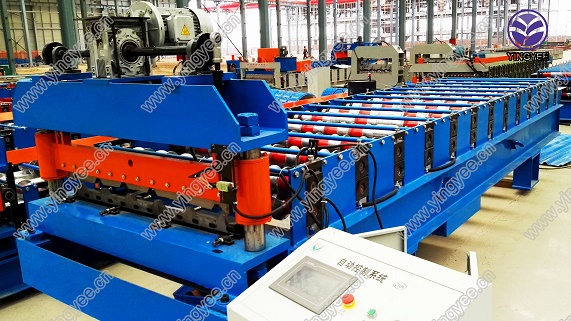
The Role of Composite Floor Deck Cold Bending Machines in Modern Construction
In the ever-evolving world of construction, efficiency and precision are paramount. Among the various technological advancements, the composite floor deck cold bending machine stands out as a crucial innovation that has greatly enhanced the construction process. This specialized equipment not only streamlines the production of composite floor decks but also ensures that the resulting structures are robust, lightweight, and cost-effective.
Composite floor decks are increasingly favored in modern building projects due to their combination of materials, typically steel and concrete. The steel provides tensile strength, while the concrete offers compressive strength, leading to a highly efficient structural system. However, the production of these composite decks requires specialized machinery capable of bending and shaping materials to precise specifications. This is where the cold bending machine comes into play.
Cold bending machines are designed to manipulate steel sheets at room temperature, which prevents the loss of material properties that can occur during hot bending processes. This technology enables builders to produce complex shapes and configurations that are essential for modern architectural designs. The ability to bend steel without applying heat also contributes to a safer working environment, as there are fewer risks associated with high temperatures and potential fire hazards.
One of the primary advantages of using composite floor deck cold bending machines is their efficiency. Traditional methods of producing floor decks can be time-consuming and labor-intensive. However, with the adoption of automatic or semi-automatic cold bending machines, manufacturers can increase their output significantly. These machines are equipped with advanced controls and sensors that allow for quick adjustments and precise measurements, resulting in a high level of accuracy and reduced waste.

Moreover, the flexibility offered by cold bending technology allows for customization tailored to specific project requirements. Architects and engineers can push the boundaries of design, creating unique structures that meet the demands of modern aesthetics while maintaining structural integrity. This adaptability has made cold bending machines a vital tool for contractors looking to differentiate themselves in a competitive market.
In addition to efficiency and design flexibility, the use of composite floor deck cold bending machines also contributes to sustainability in construction. By minimizing waste during the production process and maximizing material usage, these machines play a significant role in reducing the environmental impact of construction projects. Furthermore, the lightweight nature of composite floor decks leads to less energy consumption during transportation and installation, resulting in an overall lower carbon footprint.
The integration of automated features such as Computer Numerical Control (CNC) further enhances the capabilities of cold bending machines. CNC technology allows for high levels of precision and repeatability, ensuring that each deck produced meets stringent quality standards. This reliability is essential in the construction industry, where safety and compliance with building codes are critical.
In conclusion, the composite floor deck cold bending machine is a vital innovation that has transformed the construction landscape. It not only enhances the efficiency and precision of producing composite decks but also enables greater design flexibility and sustainability. As the construction industry continues to embrace new technologies, the role of cold bending machines will undoubtedly become more prominent, driving the future of construction toward greater innovation and efficiency. For builders and architects alike, understanding and utilizing this technology will be key to staying ahead in a rapidly advancing field.